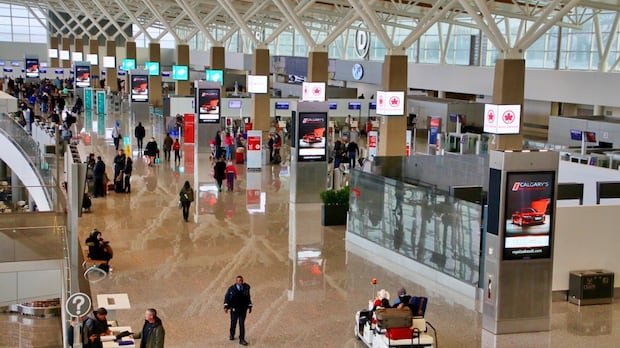Major airlines, airports, and travelers, both national and international, may encounter increased expenses if pre-clearance services are eliminated in Canada, according to an aviation analyst.
Pete Hoekstra, the U.S. ambassador to Canada, expressed concerns about declining utilization of pre-clearance facilities at Canadian airports amidst reduced travel from Canada to the U.S. this year. Hoekstra suggested that the U.S. government might need to reconsider providing this service due to financial implications.
During the Global Business Forum in Banff, Alta., Hoekstra stated, “We’re uncertain if we can sustain the current numbers… pre-clearance is a U.S. government-funded service, and if the numbers don’t add up, adjustments must be made.”
Pre-clearance enables travelers to clear U.S. customs in Canada before departure, allowing them to bypass long queues at busier U.S. airports. Initially introduced in Toronto in 1952 to enhance American travel appeal to Canadians, pre-clearance is now available at various Canadian airports including Calgary, Edmonton, Toronto, Vancouver, Montreal, Halifax, Winnipeg, and Ottawa.
The U.S. Customs and Border Protection operates 15 pre-clearance locations across six countries, pre-clearing over 22 million passengers in 2024, which accounts for nearly 16% of all air travelers entering the U.S.
Both Air Canada and WestJet heavily promote U.S. flights from Canada due to the convenience pre-clearance offers. The service not only benefits Canadian travelers but also facilitates smoother customs clearance for American travelers returning from international destinations like London or Tokyo.
Despite the decline in U.S. travel from Canada this year, major domestic airlines still witness substantial U.S.-bound bookings. However, Hoekstra’s remarks pose risks to airlines seeking to attract U.S. travelers.
Regarding the financial aspect, while pre-clearance occupies significant space in Canadian airports, the U.S. primarily covers the operational costs. Although the precise economic gains for the U.S. from pre-clearance are challenging to quantify, the overall tourism benefits are evident.
The potential removal of pre-clearance could impact the finances of busy airports in Toronto, Vancouver, and Montreal more significantly than smaller airports in cities like Edmonton, Halifax, and Winnipeg. Despite the prospect of repurposing valuable airport real estate without pre-clearance, a decline in U.S. travel would likely result in revenue loss for Canadian airports.
In conclusion, the future of pre-clearance services in Canadian airports remains uncertain, with implications for airlines, airports, and travelers on both sides of the border.


